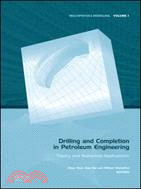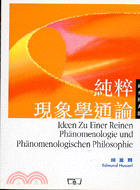Drilling and Completion in Petroleum Engineering:Theory and Numerical Applications
商品資訊
系列名:Multiphysics Modeling
ISBN13:9780415665278
出版社:CRC Press UK
作者:Edited by Xinpu Shen; Mao Bai and William Standifird
出版日:2011/10/05
裝訂/頁數:精裝/254頁
規格:24.6cm*17.4cm (高/寬)
版次:1
定價
:NT$ 13200 元優惠價
:90 折 11880 元
若需訂購本書,請電洽客服 02-25006600[分機130、131]。
商品簡介
作者簡介
目次
商品簡介
Modern petroleum and petrotechnical engineering is increasingly challenging due to the inherently scarce and decreasing number of global petroleum resources. Exploiting these resources efficiently will require researchers, scientists, engineers and other practitioners to develop innovative mathematical solutions to serve as basis for new asset development designs. Deploying these systems in numerical models is essential to the future success and efficiency of the petroleum industry.
Multiphysics modeling has been widely applied in the petroleum industry since the 1960s. The rapid development of computer technology has enabled the numerical applications of multiphysics modeling in the petroleum industry: its applications are particularly popular for the numerical simulation of drilling and completion processes. This book covers theory and numerical applications of multiphysical modeling presenting various author-developed subroutines, used to address complex pore pressure input, complex initial geo-stress field input, etc. Some innovative methods in drilling and completion developed by the authors, such as trajectory optimization and a 3-dimensional workflow for calculation of mud weight window etc, are also presented. Detailed explanations are provided for the modeling process of each application example included in the book. In addition, details of the completed numerical models data are presented as supporting material which can be downloaded from the website of the publisher. Readers can easily understand key modeling techniques with the theory of multiphysics embedded in examples of applications,and can use the data to reproduce the results presented.
While this book would be of interest to any student, academic or professional practitioner of engineering, mathematics and natural science, we believe those professionals and academics working in civil engineering, petroleum engineering and petroleum geomechanics would find the work especially relevant to their endeavors.
Multiphysics modeling has been widely applied in the petroleum industry since the 1960s. The rapid development of computer technology has enabled the numerical applications of multiphysics modeling in the petroleum industry: its applications are particularly popular for the numerical simulation of drilling and completion processes. This book covers theory and numerical applications of multiphysical modeling presenting various author-developed subroutines, used to address complex pore pressure input, complex initial geo-stress field input, etc. Some innovative methods in drilling and completion developed by the authors, such as trajectory optimization and a 3-dimensional workflow for calculation of mud weight window etc, are also presented. Detailed explanations are provided for the modeling process of each application example included in the book. In addition, details of the completed numerical models data are presented as supporting material which can be downloaded from the website of the publisher. Readers can easily understand key modeling techniques with the theory of multiphysics embedded in examples of applications,and can use the data to reproduce the results presented.
While this book would be of interest to any student, academic or professional practitioner of engineering, mathematics and natural science, we believe those professionals and academics working in civil engineering, petroleum engineering and petroleum geomechanics would find the work especially relevant to their endeavors.
作者簡介
Xinpu Shen is a Principal Consultant at Halliburton Consulting, department of Petroleum Engineering, group of Geomechanics Practice. He received his PhD degree in Engineering Mechanics in 1994. He was an associate professor in Tsinghua University, Beijing, China, from 1994 to 1999. From 1997 to 2004, he worked as post-doctoral research associate in several European institutions, including Politecnico di Milano, Italy and the University of Sheffield, UK. Since May 2001, he is a professor in Engineering Mechanics in Shenyang University of Technology, China. He worked as consultant of geomechanics for Knowledge Systems Inc Houston since 2005 and until it was acquired by Halliburton in 2008. He has been coordinator to 3 projects supported by the National Natural Science Foundation of China since 2005.
Mao Bai is the Principal Consultant in Geomechanics and Geomechanics Solutions Team Leader at Halliburton Consulting and Project Management. Dr. Bai received the Msc degree in Mining Engineering from the University of Newcastle upon Tyne, UK in 1986, and Ph.D. from the Pennsylvania State University in Mineral Engineering in 1991. Before joining Halliburton in 2008, Dr. Bai worked as a Senior Research Associate at the Rock Mechanics Institute in the University of Oklahoma between 1991 and 2000, as a Senior Engineer at TerraTek / Schlumberger between 2000 and 2007, as a Senior Geomechanics Specialist at Geomechanics International / Baker Hughes between 2007 and 2008. Dr. Bai is specializing in technical advising in petroleum engineering related geomechanics. He is the author of the book "Coupled Processes in Subsurface Deformation, Flow and Transport" published by ASCE Press in 2000, and author / co-author of over 130 technical papers in geomechanics related subjects.
William Standifird currently serves as a Solutions Director for Halliburton. In this role he is charged with the invention, development and deployment of innovative technologies that support safe and efficient well construction for petroleum assets. William began his career with Schlumberger as a Drilling Services Engineer where he specialized in the application of petroleum geomechanics to deepwater drilling operations. He subsequently joined Knowledge Systems Inc. and rapidly built a global petroleum geomechanics practice which was acquired by Halliburton in 2008. William has over 20 peer reviewed publications, a Performed by Schlumberger Silver Medal and a Hart’s Meritorious Engineering Award. He holds undergraduate degrees in electronics engineering, management science and earned a Master of Business Administration from the University of Houston System.
Mao Bai is the Principal Consultant in Geomechanics and Geomechanics Solutions Team Leader at Halliburton Consulting and Project Management. Dr. Bai received the Msc degree in Mining Engineering from the University of Newcastle upon Tyne, UK in 1986, and Ph.D. from the Pennsylvania State University in Mineral Engineering in 1991. Before joining Halliburton in 2008, Dr. Bai worked as a Senior Research Associate at the Rock Mechanics Institute in the University of Oklahoma between 1991 and 2000, as a Senior Engineer at TerraTek / Schlumberger between 2000 and 2007, as a Senior Geomechanics Specialist at Geomechanics International / Baker Hughes between 2007 and 2008. Dr. Bai is specializing in technical advising in petroleum engineering related geomechanics. He is the author of the book "Coupled Processes in Subsurface Deformation, Flow and Transport" published by ASCE Press in 2000, and author / co-author of over 130 technical papers in geomechanics related subjects.
William Standifird currently serves as a Solutions Director for Halliburton. In this role he is charged with the invention, development and deployment of innovative technologies that support safe and efficient well construction for petroleum assets. William began his career with Schlumberger as a Drilling Services Engineer where he specialized in the application of petroleum geomechanics to deepwater drilling operations. He subsequently joined Knowledge Systems Inc. and rapidly built a global petroleum geomechanics practice which was acquired by Halliburton in 2008. William has over 20 peer reviewed publications, a Performed by Schlumberger Silver Medal and a Hart’s Meritorious Engineering Award. He holds undergraduate degrees in electronics engineering, management science and earned a Master of Business Administration from the University of Houston System.
目次
Table of contents
About the book series Editorial board of the book seriesForeword About the editors Acknowledgements
1 Mathematical modeling of thermo-hydro-mechanical behavior for reservoir formation under elevated temperature 1.1 Introduction 1.2 General conservation equations of heat and mass transfer within a deformable porous medium 1.2.1 Macroscopic mass conservation equations 1.2.2 Linear momentum conservation equations 1.2.3 Energy (enthalpy) conservation equations 1.3 Constitutive laws 1.3.1 Constitutive equations for mass transfer 1.3.1.1 Advective flow of gas 1.3.1.2 Advective mass flow of liquid 1.3.2 Constitutive equations for heat transfer 1.3.2.1 Conductive heat transfer within the domain Ω 1.3.2.2 Heat transferred in radiation at boundary ∂Ω 1.3.3 Constitutive equations for the mechanical response of the solid phase 1.4 Some empirical expressions 1.4.1 The expression of total porosity n 1.4.2 The expression of m> desorp 1.4.3 Effective thermal conductivity of the three-phase medium 1.5 Resultant governing equations 1.6 Equivalent integral of the governing differential equation and its weak form 1.7 Approximate solution and spatial discretization 1.8 Ending remarks
2 Damage model for rock-like materials and its application 2.1 Introduction 2.2 The Barcelona model: Scalar damage with different behaviors for tension and compression 2.2.1 Uniaxial behavior of the Barcelona model 2.2.2 Unloading behavior 2.2.3 Plastic flow2.2.4 Yielding criterion 2.3 Calibration for the size of damage process zone 2.3.1 Experiments performed with the white-light speckle method and four-point shear beam 2.3.1.1 Testing device 2.3.1.2 Experimental results 2.3.2 Numerical results obtained with finite-element analysis 2.3.2.1 Discretization of the double-notched, four-point shear beam 2.3.2.2 Numerical results obtained with double notched beam 2.3.3 Numerical results obtained with single-notched beam2.3.4 Comparisons of the experimental results with the numerical results 2.3.5 Remarks
3 Trajectory optimization for offshore wells and numerical prediction of casing failure due to production-induced compaction 3.1 Introduction 3.2 Geotechnical casing design and optimal trajectories 3.3 The work procedure 3.4 The model 3.4.1 Model geometry3.4.2 Material models 3.4.3 Loads and boundary conditions of the global model 3.5 Numerical results of the global model 3.6 General principle of submodeling techniques 3.7 First submodel 3.7.1 Local model results 3.8 Secondary submodel and casing integrity estimate 3.9 Conclusions
4 Numerical scheme for calculation of shear failure gradient of wellbore and its applications 4.1 Introduction 4.2 Scheme for calculation of SFG with 3D FEM 4.3 Numerical solution of SFG and its comparison with results obtained by Drillworks 4.3.1 The model geometry of the benchmark and its FEM mesh 4.3.2 Loads and parameters of material properties 4.3.3 Abaqus submodel calculation and results with Mohr-Coulomb model 4.3.4 Results comparison with Drucker-Prager criterion between Abaqus and Drillworks 4.3.5 Remarks 4.4 Comparison of accuracy of stress solution of a cylinder obtained by Abaqus and its analytical solution 4.5 Application 4.5.1 Pore pressure analysis with Drillworks 4.5.2 The 3D computational model4.5.2.1 Global model: Geometry, boundary condition, and loads 4.5.2.2 Numerical results of the global model 4.5.2.3 Vector-distribution of principal stresses 4.5.2.4 Submodel: Geometry, boundary condition, and loads 4.5.2.5 Numerical results of the submodel 4.6 Remarks
5 Mud weight design for horizontal wells in shallow loose sand reservoir with the finite element method 5.1 Introduction 5.2 Geological setting and geological factors affecting geomechanics 5.3 Pore pressure and initial geostress field: Prediction made with logging data and one-dimensional software 5.3.1 Pore pressure 5.3.2 Stress field orientation 5.3.3 Overburden gradient (vertical in-situ stress) 5.3.4 Minimum in-situ stress 5.3.5 Maximum in-situ horizontal stress 5.4 Formation strength and geomechanical properties 5.5 Finite element model5.6 Numerical results with finite element modeling 5.7 Conclusions
6 A case study of mud weight design with finite element method for subsalt wells 6.1 Introduction 6.2 Brief review of concepts of MWW and numerical procedure for its 3D solution 6.2.1 Brief review of mud weight window concepts 6.2.2 Numerical procedure for calculating MWW with 3D FEM 6.3 Global model description and numerical results 6.3.1 Model description 6.3.2 Numerical results of the global model 6.4 Submodel description and numerical results 6.4.1 Model description 6.4.2 Numerical results of SFG and FG obtained with the secondary submodel 6.5 Stress pattern analysis for saltbase formation 6.6 Alternative validation on stress pattern within saltbase formation 6.7 A solution with 1D tool Drillworks and its comparison with 3D solution 6.8 Conclusions
7 Numerical calculation of stress rotation caused by salt creep and pore pressure depletion 7.1 Introduction 7.2 Stress analysis for a subsalt well 7.2.1 Computational model7.2.2 Numerical results 7.3 Variation of stress orientation caused by injection and production 7.3.1 The model used in the computation7.3.2 Numerical results 7.3.2.1 Numerical results of stress rotation with isotropic permeability and injection 7.3.2.2 Numerical results on stress rotation with isotropic permeability and production 7.3.2.3 Numerical results on stress rotation with orthotropic permeability and injection 7.3.2.4 Numerical results on stress rotation with orthotropic permeability and production 7.3.3 Remarks 7.4 Variation of stress orientation caused by pore pressure depletion: Case study in Ekofisk field 7.4.1 The numerical model 7.4.2 Numerical results 7.5 Conclusions
8 Numerical analysis of casing failure under non-uniform loading in subsalt wells 8.1 Introduction 8.2 Finite element model and analysis of casing integrity 8.2.1 Numerical analysis of global model at field scale 8.2.1.1 Model geometry 8.2.1.2 Material models 8.2.1.3 Loads and boundary conditions of the global model 8.2.1.4 Numerical results of global model 8.2.2 Submodel and casing integrity estimate 8.2.2.1 Model geometry 8.2.2.2 Material models 8.2.2.3 Loads specific to the submodel 8.2.2.4 Numerical results of the submodel: Stress distribution around the borehole before cementing 8.2.2.5 Numerical results of submodel: Stress distribution within the concrete ring and casing 8.3 Numerical results of enhancement measure 8.4 Conclusions
9 Numerical predictions on critical pressure drawdown and sand production for wells in weak formations 9.1 Introduction 9.2 Model description and numerical calculation 9.2.1 Numerical calculation with global model 9.2.1.1 Values of material parameters 9.2.1.2 Loads and boundary conditions of the global model 9.2.1.3 Stress pattern 9.2.1.4 Numerical results of global model 9.3 Case 1: Prediction of CVPDD for a well with openhole completion 9.3.1 Submodel 1: Geometry of the submodel 9.3.2 Submodel 1: Boundary condition and loads 9.3.3 Numerical scheme of the calculation 9.3.4 Numerical results 9.4 Case 2: Numerical prediction of CVPDD for well with casing completion 9.4.1 Modeling casing 9.4.2 Case 2A: Casing with perforation of 8 shots per 0.3048 m 9.4.2.1 Description of the model: Case 2A 9.4.2.2 Numerical results of Case 2A 9.4.3 Case 2B: Casing with perforation of 4 shots per 0.348 m (per ft) 9.4.3.1 Geometry of the model: Case 2B 9.4.3.2 Numerical results of Case 2B 9.4.4 Remarks 9.5 Numerical prediction of sanding production 9.5.1 Model description and simplifications9.5.2 Numerical procedure for prediction of sand production 9.5.3 An example of prediction of sand production 9.6 Conclusions
10 Cohesive crack for quasi-brittle fracture and numerical simulation of hydraulic fracture 10.1 Introduction 10.2 Cohesive crack for quasi-brittle materials 10.2.1 Concepts of cohesive crack 10.2.2 Influence of hydraulic pressure on yielding conditions 10.2.3 Cohesive models for mixed-mode fracture 10.2.4 Cohesive model of effective opening for mixed-mode crack 10.2.5 Cohesive law formulated in standard dissipative system 10.2.5.1 Elastoplastic damage interface model 10.2.5.2 Viscoplastic interface crack model 10.3 Cohesive element coupled with pore pressure for simulation of hydraulic fracture of rock 10.3.1 Nodal sequence and stress components of cohesive element 10.3.2 Fluid flow model of the cohesive element 10.3.2.1 Defining pore fluid flow properties 10.3.2.2 Tangential flow 10.3.2.3 Newtonian fluid 10.3.2.4 Power law fluid 10.3.2.5 Normal flow across gap surfaces 10.4 Numerical simulation of hydraulic fracturing with 3-dimensional finite element method 10.4.1 Numerical procedure for the numerical simulation of hydraulic fracturing 10.4.2 Finite element model 10.4.2.1 Geometry and mesh 10.4.2.2 Initial conditions 10.4.2.3 Boundary condition 10.4.2.4 Loads 10.4.2.5 Values of material parameter 10.4.3 Numerical results 10.5 Conclusions
11 Special applications in formation stimulation and injection modeling 11.1 Introduction 11.2 Normal applications 11.3 Special applications 11.4 Unconventional shale gas reservoirs 11.4.1 Theoretical basis in simulation 11.4.2 An equivalent shale gas hydraulic fracturing model 11.4.3 Leakoff effect for a contained fracture 11.4.4 Concluding remarks 11.5 Cuttings re-injection 11.5.1 Theoretical basis in simulation 11.5.2 An equivalent cuttings re-injection model 11.5.3 Key input parameters for cuttings re-injection modeling 11.5.4 Multiple fracture modeling 11.5.5 Net pressure responses in cyclic injection 11.5.6 Concluding remarks 11.6 Fracture packing in unconsolidated formation 11.6.1 Theoretical basis in simulation 11.6.2 An equivalent frac-pack model 11.6.3 Key input parameters for frac-pack modeling 11.6.4 Fracture re-growth during the frac-pack process 11.6.5 Concluding remarks 11.7 Produced water re-injection 11.7.1 Theoretical basis in simulation 11.7.2 An equivalent produced water re-injection model 11.7.3 Numerical modeling of cross flow in produced water transport 11.7.4 Analytical modeling of cross flow and its effect on produced water transport 11.7.5 Concluding remarks
Subject index Book series page
About the book series Editorial board of the book seriesForeword About the editors Acknowledgements
1 Mathematical modeling of thermo-hydro-mechanical behavior for reservoir formation under elevated temperature 1.1 Introduction 1.2 General conservation equations of heat and mass transfer within a deformable porous medium 1.2.1 Macroscopic mass conservation equations 1.2.2 Linear momentum conservation equations 1.2.3 Energy (enthalpy) conservation equations 1.3 Constitutive laws 1.3.1 Constitutive equations for mass transfer 1.3.1.1 Advective flow of gas 1.3.1.2 Advective mass flow of liquid 1.3.2 Constitutive equations for heat transfer 1.3.2.1 Conductive heat transfer within the domain Ω 1.3.2.2 Heat transferred in radiation at boundary ∂Ω 1.3.3 Constitutive equations for the mechanical response of the solid phase 1.4 Some empirical expressions 1.4.1 The expression of total porosity n 1.4.2 The expression of m> desorp 1.4.3 Effective thermal conductivity of the three-phase medium 1.5 Resultant governing equations 1.6 Equivalent integral of the governing differential equation and its weak form 1.7 Approximate solution and spatial discretization 1.8 Ending remarks
2 Damage model for rock-like materials and its application 2.1 Introduction 2.2 The Barcelona model: Scalar damage with different behaviors for tension and compression 2.2.1 Uniaxial behavior of the Barcelona model 2.2.2 Unloading behavior 2.2.3 Plastic flow2.2.4 Yielding criterion 2.3 Calibration for the size of damage process zone 2.3.1 Experiments performed with the white-light speckle method and four-point shear beam 2.3.1.1 Testing device 2.3.1.2 Experimental results 2.3.2 Numerical results obtained with finite-element analysis 2.3.2.1 Discretization of the double-notched, four-point shear beam 2.3.2.2 Numerical results obtained with double notched beam 2.3.3 Numerical results obtained with single-notched beam2.3.4 Comparisons of the experimental results with the numerical results 2.3.5 Remarks
3 Trajectory optimization for offshore wells and numerical prediction of casing failure due to production-induced compaction 3.1 Introduction 3.2 Geotechnical casing design and optimal trajectories 3.3 The work procedure 3.4 The model 3.4.1 Model geometry3.4.2 Material models 3.4.3 Loads and boundary conditions of the global model 3.5 Numerical results of the global model 3.6 General principle of submodeling techniques 3.7 First submodel 3.7.1 Local model results 3.8 Secondary submodel and casing integrity estimate 3.9 Conclusions
4 Numerical scheme for calculation of shear failure gradient of wellbore and its applications 4.1 Introduction 4.2 Scheme for calculation of SFG with 3D FEM 4.3 Numerical solution of SFG and its comparison with results obtained by Drillworks 4.3.1 The model geometry of the benchmark and its FEM mesh 4.3.2 Loads and parameters of material properties 4.3.3 Abaqus submodel calculation and results with Mohr-Coulomb model 4.3.4 Results comparison with Drucker-Prager criterion between Abaqus and Drillworks 4.3.5 Remarks 4.4 Comparison of accuracy of stress solution of a cylinder obtained by Abaqus and its analytical solution 4.5 Application 4.5.1 Pore pressure analysis with Drillworks 4.5.2 The 3D computational model4.5.2.1 Global model: Geometry, boundary condition, and loads 4.5.2.2 Numerical results of the global model 4.5.2.3 Vector-distribution of principal stresses 4.5.2.4 Submodel: Geometry, boundary condition, and loads 4.5.2.5 Numerical results of the submodel 4.6 Remarks
5 Mud weight design for horizontal wells in shallow loose sand reservoir with the finite element method 5.1 Introduction 5.2 Geological setting and geological factors affecting geomechanics 5.3 Pore pressure and initial geostress field: Prediction made with logging data and one-dimensional software 5.3.1 Pore pressure 5.3.2 Stress field orientation 5.3.3 Overburden gradient (vertical in-situ stress) 5.3.4 Minimum in-situ stress 5.3.5 Maximum in-situ horizontal stress 5.4 Formation strength and geomechanical properties 5.5 Finite element model5.6 Numerical results with finite element modeling 5.7 Conclusions
6 A case study of mud weight design with finite element method for subsalt wells 6.1 Introduction 6.2 Brief review of concepts of MWW and numerical procedure for its 3D solution 6.2.1 Brief review of mud weight window concepts 6.2.2 Numerical procedure for calculating MWW with 3D FEM 6.3 Global model description and numerical results 6.3.1 Model description 6.3.2 Numerical results of the global model 6.4 Submodel description and numerical results 6.4.1 Model description 6.4.2 Numerical results of SFG and FG obtained with the secondary submodel 6.5 Stress pattern analysis for saltbase formation 6.6 Alternative validation on stress pattern within saltbase formation 6.7 A solution with 1D tool Drillworks and its comparison with 3D solution 6.8 Conclusions
7 Numerical calculation of stress rotation caused by salt creep and pore pressure depletion 7.1 Introduction 7.2 Stress analysis for a subsalt well 7.2.1 Computational model7.2.2 Numerical results 7.3 Variation of stress orientation caused by injection and production 7.3.1 The model used in the computation7.3.2 Numerical results 7.3.2.1 Numerical results of stress rotation with isotropic permeability and injection 7.3.2.2 Numerical results on stress rotation with isotropic permeability and production 7.3.2.3 Numerical results on stress rotation with orthotropic permeability and injection 7.3.2.4 Numerical results on stress rotation with orthotropic permeability and production 7.3.3 Remarks 7.4 Variation of stress orientation caused by pore pressure depletion: Case study in Ekofisk field 7.4.1 The numerical model 7.4.2 Numerical results 7.5 Conclusions
8 Numerical analysis of casing failure under non-uniform loading in subsalt wells 8.1 Introduction 8.2 Finite element model and analysis of casing integrity 8.2.1 Numerical analysis of global model at field scale 8.2.1.1 Model geometry 8.2.1.2 Material models 8.2.1.3 Loads and boundary conditions of the global model 8.2.1.4 Numerical results of global model 8.2.2 Submodel and casing integrity estimate 8.2.2.1 Model geometry 8.2.2.2 Material models 8.2.2.3 Loads specific to the submodel 8.2.2.4 Numerical results of the submodel: Stress distribution around the borehole before cementing 8.2.2.5 Numerical results of submodel: Stress distribution within the concrete ring and casing 8.3 Numerical results of enhancement measure 8.4 Conclusions
9 Numerical predictions on critical pressure drawdown and sand production for wells in weak formations 9.1 Introduction 9.2 Model description and numerical calculation 9.2.1 Numerical calculation with global model 9.2.1.1 Values of material parameters 9.2.1.2 Loads and boundary conditions of the global model 9.2.1.3 Stress pattern 9.2.1.4 Numerical results of global model 9.3 Case 1: Prediction of CVPDD for a well with openhole completion 9.3.1 Submodel 1: Geometry of the submodel 9.3.2 Submodel 1: Boundary condition and loads 9.3.3 Numerical scheme of the calculation 9.3.4 Numerical results 9.4 Case 2: Numerical prediction of CVPDD for well with casing completion 9.4.1 Modeling casing 9.4.2 Case 2A: Casing with perforation of 8 shots per 0.3048 m 9.4.2.1 Description of the model: Case 2A 9.4.2.2 Numerical results of Case 2A 9.4.3 Case 2B: Casing with perforation of 4 shots per 0.348 m (per ft) 9.4.3.1 Geometry of the model: Case 2B 9.4.3.2 Numerical results of Case 2B 9.4.4 Remarks 9.5 Numerical prediction of sanding production 9.5.1 Model description and simplifications9.5.2 Numerical procedure for prediction of sand production 9.5.3 An example of prediction of sand production 9.6 Conclusions
10 Cohesive crack for quasi-brittle fracture and numerical simulation of hydraulic fracture 10.1 Introduction 10.2 Cohesive crack for quasi-brittle materials 10.2.1 Concepts of cohesive crack 10.2.2 Influence of hydraulic pressure on yielding conditions 10.2.3 Cohesive models for mixed-mode fracture 10.2.4 Cohesive model of effective opening for mixed-mode crack 10.2.5 Cohesive law formulated in standard dissipative system 10.2.5.1 Elastoplastic damage interface model 10.2.5.2 Viscoplastic interface crack model 10.3 Cohesive element coupled with pore pressure for simulation of hydraulic fracture of rock 10.3.1 Nodal sequence and stress components of cohesive element 10.3.2 Fluid flow model of the cohesive element 10.3.2.1 Defining pore fluid flow properties 10.3.2.2 Tangential flow 10.3.2.3 Newtonian fluid 10.3.2.4 Power law fluid 10.3.2.5 Normal flow across gap surfaces 10.4 Numerical simulation of hydraulic fracturing with 3-dimensional finite element method 10.4.1 Numerical procedure for the numerical simulation of hydraulic fracturing 10.4.2 Finite element model 10.4.2.1 Geometry and mesh 10.4.2.2 Initial conditions 10.4.2.3 Boundary condition 10.4.2.4 Loads 10.4.2.5 Values of material parameter 10.4.3 Numerical results 10.5 Conclusions
11 Special applications in formation stimulation and injection modeling 11.1 Introduction 11.2 Normal applications 11.3 Special applications 11.4 Unconventional shale gas reservoirs 11.4.1 Theoretical basis in simulation 11.4.2 An equivalent shale gas hydraulic fracturing model 11.4.3 Leakoff effect for a contained fracture 11.4.4 Concluding remarks 11.5 Cuttings re-injection 11.5.1 Theoretical basis in simulation 11.5.2 An equivalent cuttings re-injection model 11.5.3 Key input parameters for cuttings re-injection modeling 11.5.4 Multiple fracture modeling 11.5.5 Net pressure responses in cyclic injection 11.5.6 Concluding remarks 11.6 Fracture packing in unconsolidated formation 11.6.1 Theoretical basis in simulation 11.6.2 An equivalent frac-pack model 11.6.3 Key input parameters for frac-pack modeling 11.6.4 Fracture re-growth during the frac-pack process 11.6.5 Concluding remarks 11.7 Produced water re-injection 11.7.1 Theoretical basis in simulation 11.7.2 An equivalent produced water re-injection model 11.7.3 Numerical modeling of cross flow in produced water transport 11.7.4 Analytical modeling of cross flow and its effect on produced water transport 11.7.5 Concluding remarks
Subject index Book series page
主題書展
更多
主題書展
更多書展今日66折
您曾經瀏覽過的商品
購物須知
外文書商品之書封,為出版社提供之樣本。實際出貨商品,以出版社所提供之現有版本為主。部份書籍,因出版社供應狀況特殊,匯率將依實際狀況做調整。
無庫存之商品,在您完成訂單程序之後,將以空運的方式為你下單調貨。為了縮短等待的時間,建議您將外文書與其他商品分開下單,以獲得最快的取貨速度,平均調貨時間為1~2個月。
為了保護您的權益,「三民網路書店」提供會員七日商品鑑賞期(收到商品為起始日)。
若要辦理退貨,請在商品鑑賞期內寄回,且商品必須是全新狀態與完整包裝(商品、附件、發票、隨貨贈品等)否則恕不接受退貨。




























